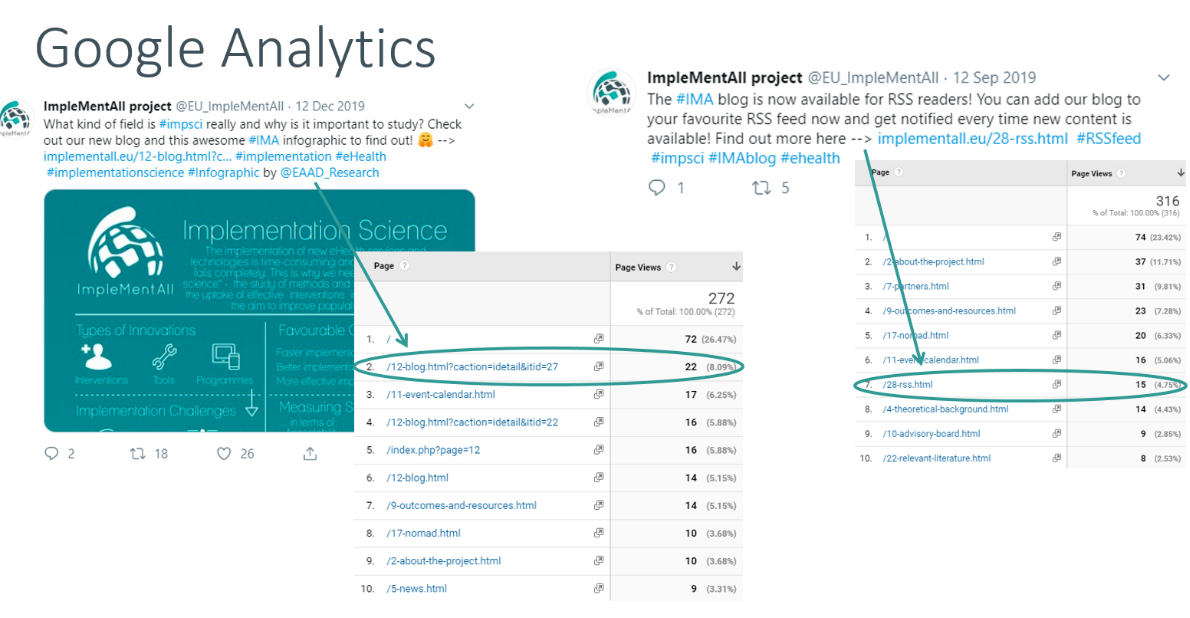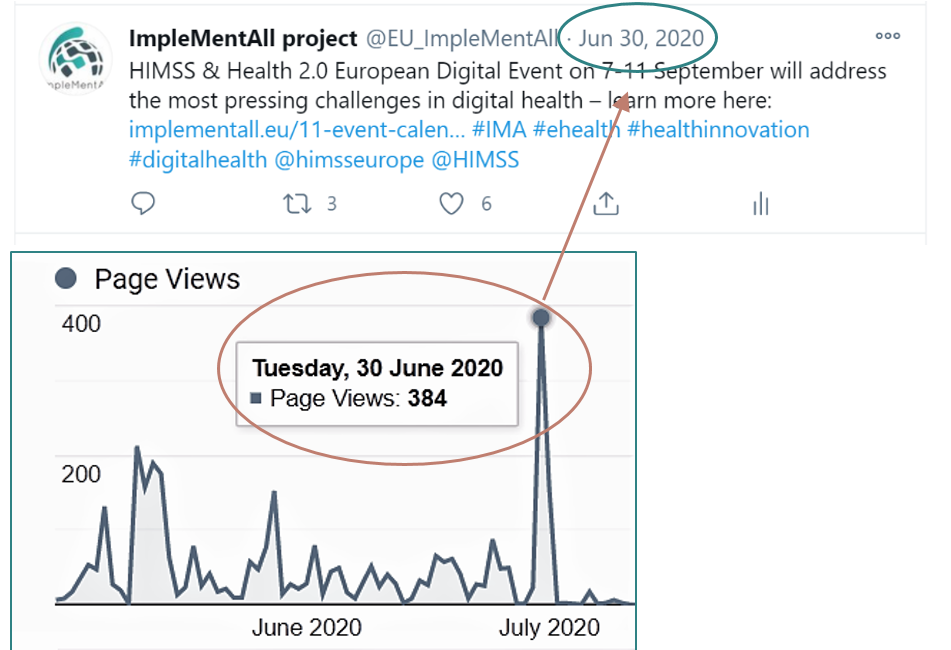Blog
Social Media in EU projects – why and how
Fri. 15. Jan 2021 10:09
Closing in on the end of the ImpleMentAll project, it is time to reflect upon some of the communication tools used during the course of the project. Why does a project like IMA have a Twitter account? How is that helpful and advantageous? How is it used and promoted? This blog post will give insight into the thoughts and reflections on the specific communication style of social media and explain how a project like IMA can benefit from social media promotion.
IMA’s Twitter profile was created in an effort to encourage open dialogue with stakeholders, and to reach a broad audience while showing that IMA is a dynamic and active project. Twitter as the specific social platform, was chosen as it is dynamic and vibrant, but still widely used for professional purposes. In addition, several of the project’s key stakeholder groups are active on Twitter, e.g. health authorities, interest organisations, other EU funded projects, researchers, the European Commission, etc. The content shared on Twitter is a mixture of project news also portrayed on the website, retweeting of relevant posts from the project partners or other stakeholders, as well as small updates from the project’s daily activities.
The project, as well as the Consortium, announces updates – big or small – and direct their messages to the attention of relevant stakeholders by the use of hashtags and handles. In that way, Twitter increases the visibility of the project and its interests facilitating networking and inspiration. Moreover, the transparency of the project’s methods is also increased through the use of social media, increasing its credibility by inviting all interested into the processes and reflections of the project.
In order to promote and render the project’s twitter visible, an embedded timeline of the Twitter account was added to the project website, displaying the latest tweets at the front page. The purpose is to catch website visitors’ attention and encourage them to follow the project on Twitter. However, Twitter activity also has an impact on website activity, creating a positive feedback loop between the two platforms by interchangeable promotion on each medium. This is for instance seen as peeks in page views on the blog often correspond with a tweet being posted or a general high activity in a specific period on Twitter. In that way, in addition to Twitter being a way to disseminate and communicate the project to interested parties, it is often used as an appetiser and an invitation to a more in-depth information platform – the website.

“It is important that the work of EU-funded projects is made visible to EU citizens, and the European Commission places great emphasis on communication efforts carried out by projects like ours. Social media allow for great flexibility and timeliness in the communication as we can provide updates on basically anything at any time. Also, having a two-way communication channels such as the Twitter account and blog allows us to communicate directly with our stakeholders and collaborators”, says Mette Atipei Craggs, Project and Communication Manager of IMA.
Overall, the use of Twitter has created an informal space from which the IMA project has been able to communicate every kind of update to all interested parties whomever they might be, demystifying the processes and goals of the project and promoting and inspiring further exploration of information through the website.

Do you think social media play an important role in the communication about EU projects? What is your experience with different platforms? Please share your thoughts and reflections on this in the comments below!
